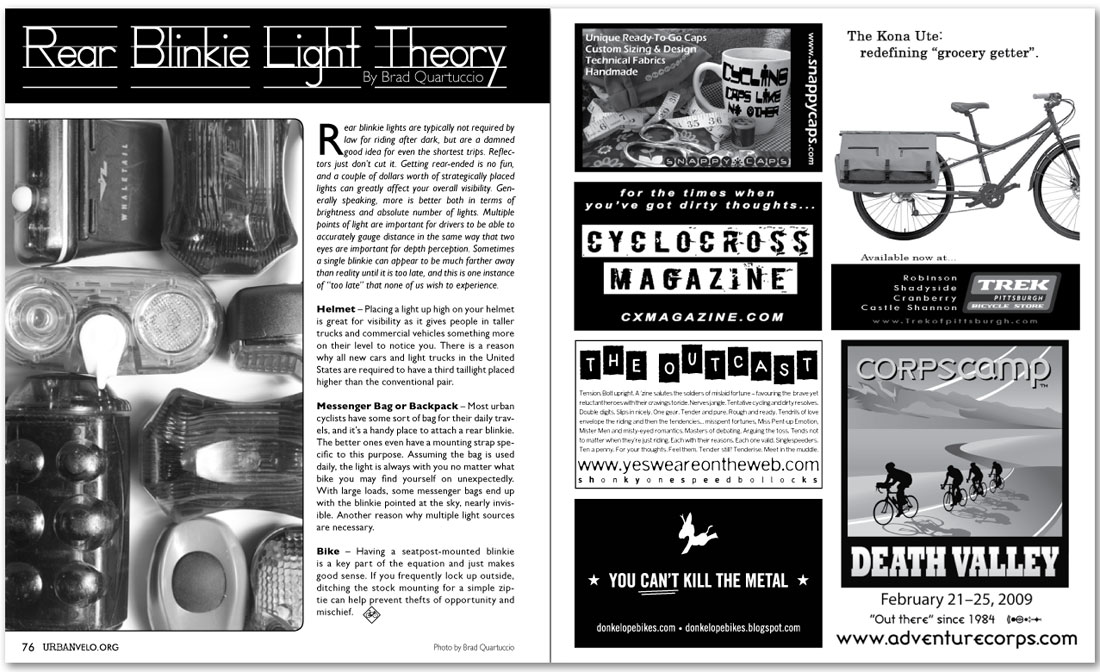By Brad Quartuccio


|
|||
Rear Blinkie Light TheoryBy Brad Quartuccio Rear blinkie lights are typically not required by law for riding after dark, but are a damned good idea for even the shortest trips. Reflectors just don’t cut it. Getting rear-ended is no fun, and a couple of dollars worth of strategically placed lights can greatly affect your overall visibility. Generally speaking, more is better both in terms of brightness and absolute number of lights. Multiple points of light are important for drivers to be able to accurately gauge distance in the same way that two eyes are important for depth perception. Sometimes a single blinkie can appear to be much farther away than reality until it is too late, and this is one instance of “too late” that none of us wish to experience. Helmet – Placing a light up high on your helmet is great for visibility as it gives people in taller trucks and commercial vehicles something more on their level to notice you. There is a reason why all new cars and light trucks in the United States are required to have a third taillight placed higher than the conventional pair. Messenger Bag or Backpack – Most urban cyclists have some sort of bag for their daily travels, and it’s a handy place to attach a rear blinkie. The better ones even have a mounting strap specific to this purpose. Assuming the bag is used daily, the light is always with you no matter what bike you may find yourself on unexpectedly. With large loads, some messenger bags end up with the blinkie pointed at the sky, nearly invisible. Another reason why multiple light sources are necessary. Bike – Having a seatpost-mounted blinkie is a key part of the equation and just makes good sense. If you frequently lock up outside, ditching the stock mounting for a simple zip-tie can help prevent thefts of opportunity and mischief.
|
|
|